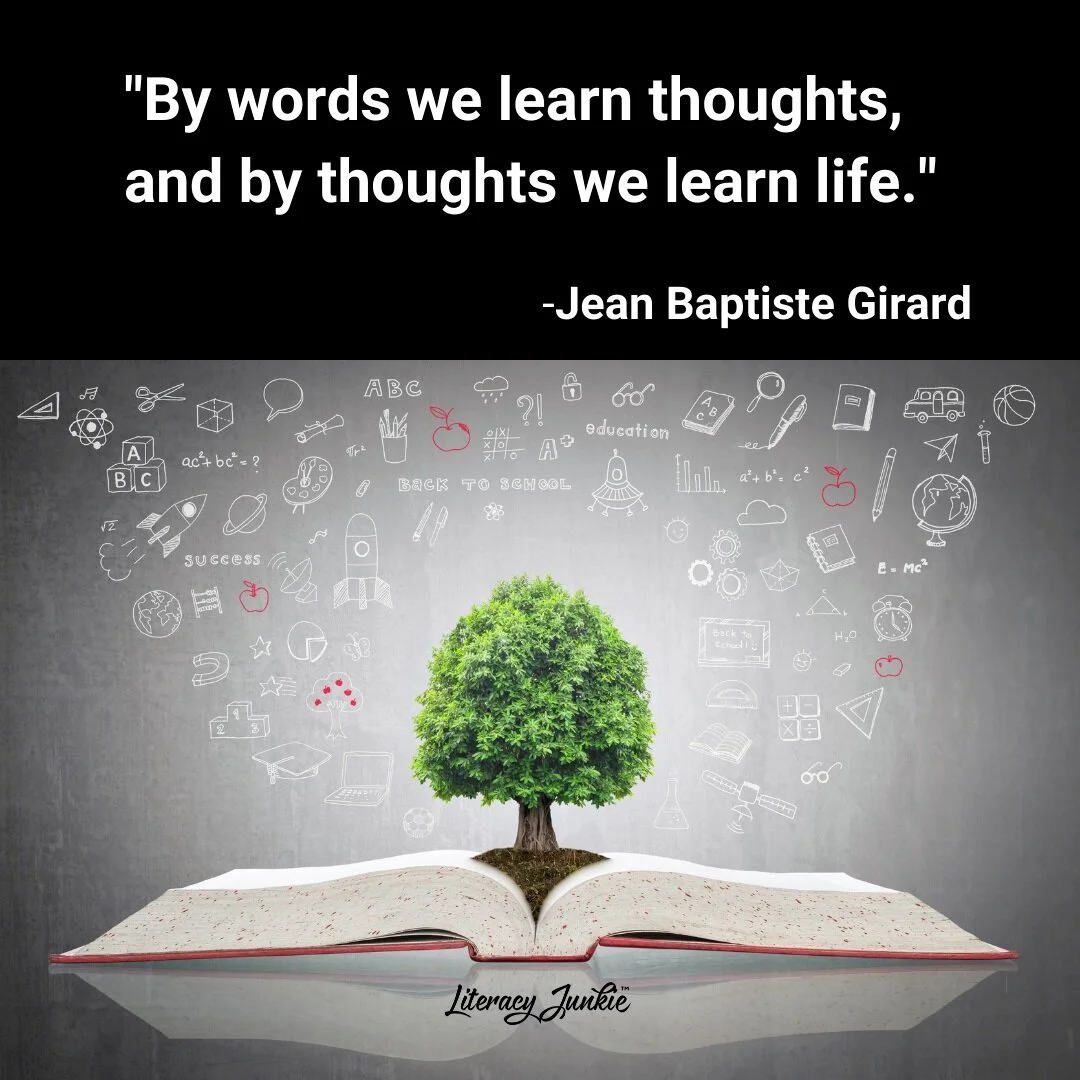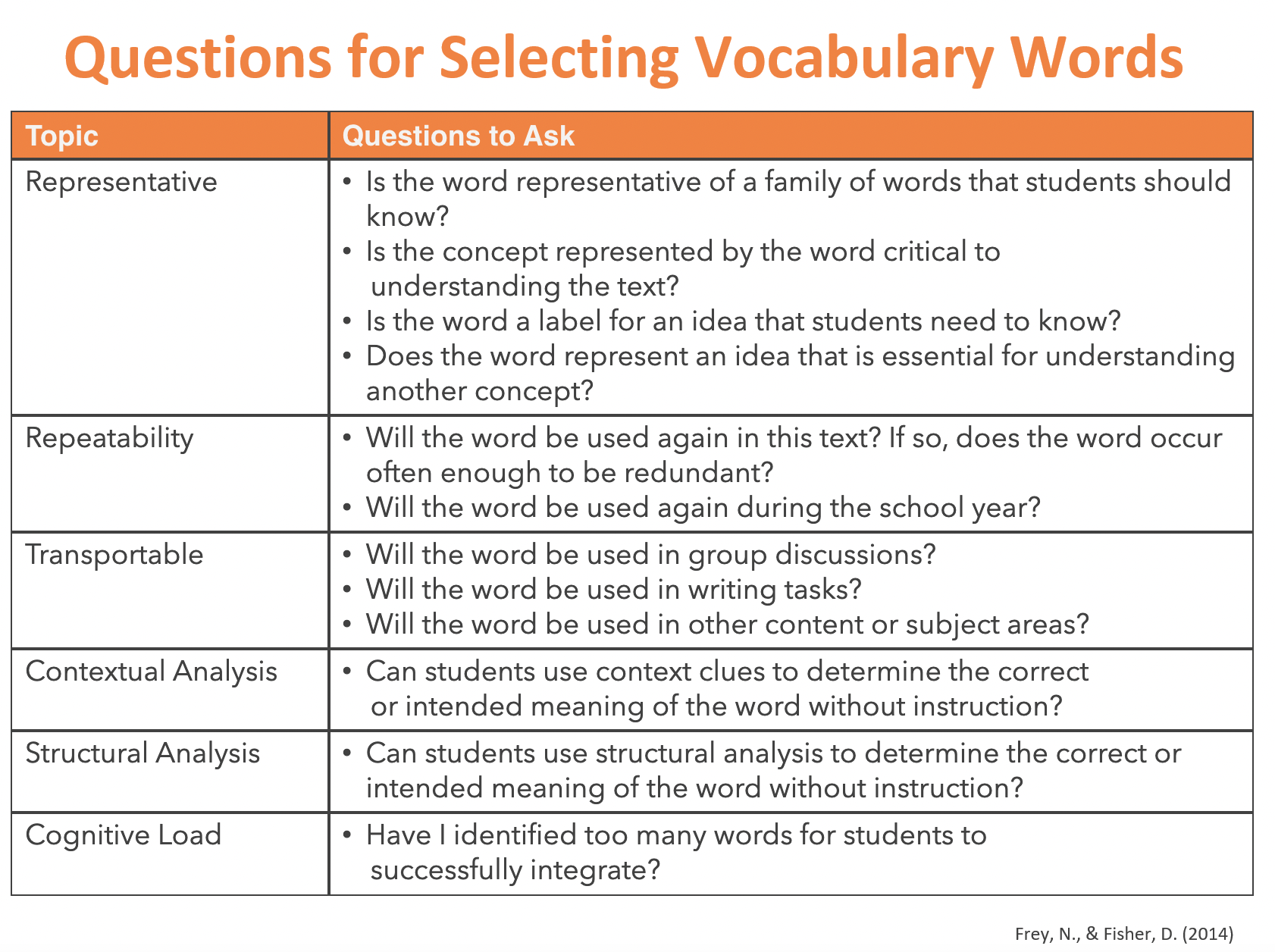Selecting Words for Instruction
Have you ever been in a live or virtual meeting or party before this pandemic and been nod-crafty? You know, nodding your head with an air of great wisdom and understanding when you actually tuned out a while ago. You may have been nod-crafty when your husband/partner talks about golf/Aikido, and you’re thinking about organizing your closet or getting back to the book you’re reading. I think we all have at one time or another, and maybe your students have even been nod-crafty during your instruction.
Yes, nod-crafty is a word, and I first heard about this term on Susie Dent’s Twitter feed. She is an English lexicographer, etymologist and you can see her on the UK show 8 out of 10 Cats Does Countdown, a very funny show, by the way. She posts interesting and fun content on words and their origins etc., on Twitter.
According to the Oxford English Dictionary, via Twitter, “Nod-crafty is an obsolete rare term meaning 'given to nodding the head with an air of great wisdom.” While it is an obsolete word, it definitely needs a rival. This word makes so much sense; it’s so much fun! And with all the Zoom meetings going on, I’m sure there have been more than a few nod-crafty moments.
Also, can you imagine a discussion in your classroom around this word? Your students would find endless ways to demonstrate throughout the week how nod-crafty they are. I think they would love to provide verbal examples, write about the word, and talk about the word at home. If you want to incorporate more discussions around words, look at this post, Own the Word.
Vocabulary development involves the receptive, productive, oral, and written use of words. Receptive vocabulary is the words we understand through reading and listening. It is the mental stores of words and phrases we know when we hear from others. Receptive language is larger than productive language. Productive vocabulary is words used and understood through reading, writing, and speaking. It’s the words used to express ourselves.
We see this in children learning to decode. Their receptive vocabulary is more extensive than productive. Once students become sound decoders, they can read more words, but they may not understand all the new terms they are reading. So we teach students to use context clues. However, teaching context clues is still a challenging task for good readers and linguistically disadvantaged students. To own the word from context, students still need multiple exposures and multiple usages.
Also, as students progress in grades, the text becomes more complex and dense. I remember working with struggling readers in 4th grade and teaching them context clues. Often, I needed to teach them that it’s not just a sentence, but they may have to reread the paragraph before or after to acquire meaning. As text becomes more complex for our students, context becomes challenging. Therefore, we need to reteach or teach how, when, and why to use context clues. And that involves rereading and holding on to information while reading and what words are essential for understanding the text. Furthermore, they need to practice listening, speaking, writing, and reading these words. Students need to practice using our language to own it.
Word learning is deeply complex because words in context are interrelated, flexible, with shared meanings, and ambiguous in their usage. Suppose you have had your students read a complex text. In that case, you probably know all too well about the complexity of words with their multidimensionality with parts of speech, flexibility, and nuances.
But more importantly, vocabulary development can be fun and bring knowledge along with enjoyment during instruction. A robust vocabulary is needed for all students to be able to express themselves and to communicate clearly.
Let’s Talk about Selecting Words to Teach
Teaching vocabulary is not merely teaching lists of words, but also choosing words that extend student’s understanding for multiple contexts so they can take charge and become able to expand their own vocabulary (McKeown et al., p 74. 2017).
There is a lot to think about when selecting words to teach, as vocabulary knowledge is a powerful prerequisite for comprehension. We know good comprehension is linked to academic success, well-being, and better economic opportunity. We also see the variation of vocabularies within students in our classrooms can be staggering. Having been in many classrooms working with English language learners (ELLs), I know this is hard work, and you want the most bang for your buck in selecting words for instruction.
A Quick Background on Word Lists
When discussing word selection for students, McKeown, Deane, Scott, Krovetz & Lawless, (2017) discuss words by frequency, age of acquisition, and dispersion. Word frequency, how common a word is used in language by how often it appears in common texts. It has been used regularly for educational instruction since introducing a corpus of words used most frequently in children’s books by Edward Thorndike in the early 20th century. Dolch and Fry are two examples of high-utility word lists based on word frequency. These and other lists were designed for students to memorize the words by the end of second grade to free up cognitive space and to be able to read more texts as Fry 300 Instant Words make up about 66% of words in print, according to Fry (1980). You can incorporate high-frequency words with phonics lessons, but memorizing some words in grades K-2 helps students read while focusing on decoding.
Also helpful is providing student-friendly explanations of word origins in grade-level language on why words like said and again are spelled that way but pronounced differently. They don't have to memorize it, but understanding how our language is influenced will make sense. I remember using Pat Cunningham’s words wall activities in Month-by-Month Phonics. Her work was one of the reasons I became so interested in word knowledge for instruction.
Along with word frequency is word dispersion which is how the word appears in various contexts across a wide variety of content (McKeown et al., 2017). At the same time, two words may have the same frequency; one may occur in one or two subjects and the other in many more. Fisher & Frey (2014) refer to that in their criteria as ‘representative’ and ‘transportable.’ Word dispersion is a crucial criterion used in many lists, such as the Tiered approach by Beck et al. (2002).
And a third criterion to identify words is age of acquisition. According to McKeown et al. (2017), some of these studies were done by asking adults the age that they learned words, which is wild to me, as I can barely remember when I acquired words. There are also empirical studies. So that’s good. McKeown et al., 2017 explain it more in-depth if you are interested. It's an excellent book to have for deepening one’s knowledge on vocabulary instruction and assessment.
Fisher & Frey (2014), Questions for Selecting Vocabulary Words has six criteria and multiple questions to fine-tune the word selection process. I briefly mentioned word selection here. I like this chart because it’s like having a partner with you discussing word selection. These questions will support planning through all areas of literacy; listening, speaking, reading, writing, and viewing.
I wanted to mention three other researchers who have developed criteria for word selection as well. These are similar and based on similar research. Hopefully, you’ll find one that works for you and your grade level.
Beck & McKeown, (1985), Three-Tiered approach is well known to many educators and based on a "mature, literate persons vocabulary” (p. 13.). Tier 1 words are basic words that rarely require instruction. Unless you have students with limited vocabularies or English language learners, you may need to teach tier-one words. Tier 2 words are high utility or of high frequency across multiple subjects in an individual with mature vocabulary. In contrast, tier 3 words are low utility and often domain-specific. In the chart above, I added questions as a helpful reminder when selecting words for instruction.
Francine Johnston has three criteria to select words and questions to direct the selection process. I like the simplicity of the three criteria, especially the last criteria of words for generative studies, which is similar to the representative Criteria in Fisher & Frey’s system. The generative studies delve into base words, root words, affixes, and morphology. Generative studies are a crucial criterion to support incidental word learning. Again, I like that this is simple, with three criteria and questions to support the process.
Optimal Instruction
All words are not of equal importance for instruction. Some words require a deep dive of meaningful scaffolded inquiry of the complexities of words in various contexts, while others require a brief definition. Let's talk about, Selecting Words for Instruction from Texts (SWIT), developed by Graves et al. (2014). SWIT is based on unfamiliar words for your students. Imported words are similar to Johnston’s usefulness for generative studies. What I love is they’ve added Determining Optimal Type of Instruction for the words selected for instruction. In Beck and McKewon’s 1985 article, they called this instruction fertile. Graves et al. call it Powerful. Either name you call it is explicit, purposeful, and integrated, and students become word scientists.
Hopefully, this helps in selecting words for instruction, as vocabulary knowledge contributes immensely to comprehension. And students whose comprehension is strong have more linked to academic success, well-being, and better economic opportunity.
Please share with a friend or two.
References
Beck, McKeown. (1985). Teaching vocabulary: making the instruction fit the goal. Educational Perspectives.
Beck, I. L., MCKeowm, M.G., & Kucan, L. (2002). Bringing words to life: Robust vocabulary instruction. New York. NY. Guilford Press.
Fisher D., & Frey N. (2014). Content Area Vocabulary Learning. Reading Teacher, 67(8), 594-599. doi:10.1002/trtr.1258
Fry, E. (1980). The new instant word list. The Reading Teacher, 34(3), 284-289.
Graves et al. (2014). Words are everywhere. The Reading Teacher, 34(3), 284-289.
Watts-Taffe, S., Gwinn, C.B., Forrest, C., (2019). Explain, engage, extend, examine: the four e’s of vocabulary instruction. The Texas Journal of Literacy Education, 7(1) 25-43.








